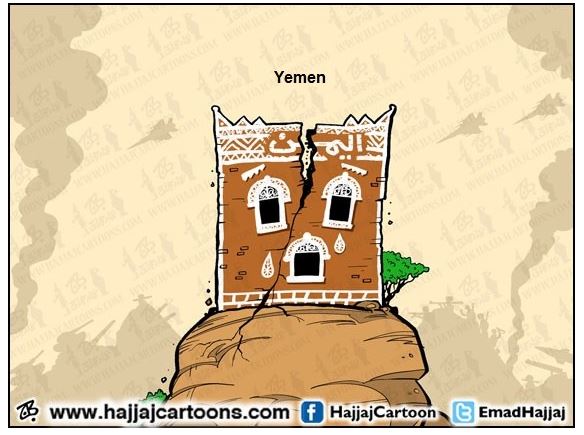Yemen: Today’s Guernica
by Cesar Chelala, Tlaxcala, 7 December 2017. On the market day of April 26, 1937, at the bequest of General
Francisco Franco, a bombing of the Basque town of Guernica took place.
It was carried out by Spain’s nationalistic government allies, the Nazi
German Luftwaffe’s Condor Legion and the Fascist Italian Aviazione
Legionaria. The attack, under the code name Operation Rügen, in
which hundreds of people died, became a rallying cry against the
brutal killing of innocent civilians. 80 years later, however, an even
more criminal action is carried out against Yemeni civilians mainly by
Saudi Arabia, with the complicity of the United States.

The Yemeni civil war began in 2015 between two factions that claim to
represent the Yemeni government. Houthi soldiers allied with forces
loyal to the former president Ali Abdullah Saleh, clashed with forces
loyal to the government of Abdrabbuh Mansur Hadi. A coalition led by
Saudi Arabia launched military operations against the Houthis, and the
U.S. provided logistical and military support for the campaign.
The Houthi rebels make up almost a third of Yemen, and have ruled the
country for hundreds of years. Since the beginning of the hostilities,
the Houthis advance to the south of Yemen has met with the constant
bombardment by Saudi Arabia and its allies, resulting in a dramatic
humanitarian crisis. Thousands of people have been killed, many of them
civilians, and thousands more have been forced to leave their homes and
are desperately trying to find food and potable water.
Contaminated water as a result of an almost total sanitation
breakdown has provoked a cholera outbreak considered the worst in
history. The World Health Organization (WHO) has reported more than
815,000 suspected cases and 2,156 deaths. At the current rate of
infection, experts estimate that the number of cases will reach seven
figures by the end of the year. Presently, almost 20 million Yemenis
–more than two-thirds of the population- do not have access to clean
water and sanitation.
Since the beginning of the conflict, the emergency health-care needs
of the population have been so great that health care workers are
unable to provide even basic medical care. When fighting intensified in
some areas, there were no formal rescue services so residents and
relatives had to dig out their loved ones from the rubble of damaged
buildings.
An Amnesty International report, “Yemen: The Forgotten War” describes
the consequences of the attacks carried out by Saudi Arabia’s
coalition: more than 4,600 civilians killed and over 8,000 injured;
three million people forced out of their homes, 18.8 million people in
need of humanitarian assistance including food, water, shelter, fuel and
sanitation and two million children out of school.
The flow of arms however, continues, unabated. “The irresponsible and
unlawful flow of arms to the warring parties in Yemen has directly
contributed to civilian suffering on a massive scale,” declared James
Lynch, from Amnesty International. As Iran continues its support of the
Houthis’ ragtag army, reports indicate that Saudi Arabia will purchase
$7 billion worth of arms from the U.S.
In the meantime, health facilities continue to be hit by bombs and
health and humanitarian workers are increasingly targeted. In a scene
out of Guernica, Amal Sabri, a resident of Mokha, a port city on the Red
Sea coast of Yemen, described a Saudi Arabia airstrike which killed at
least 63 civilians, “It was like something out of Judgment Day.
Corpses and heads scattered, engulfed by fire and ashes.”
In Yemen today, world powers have not yet learned the lesson from Guernica.


